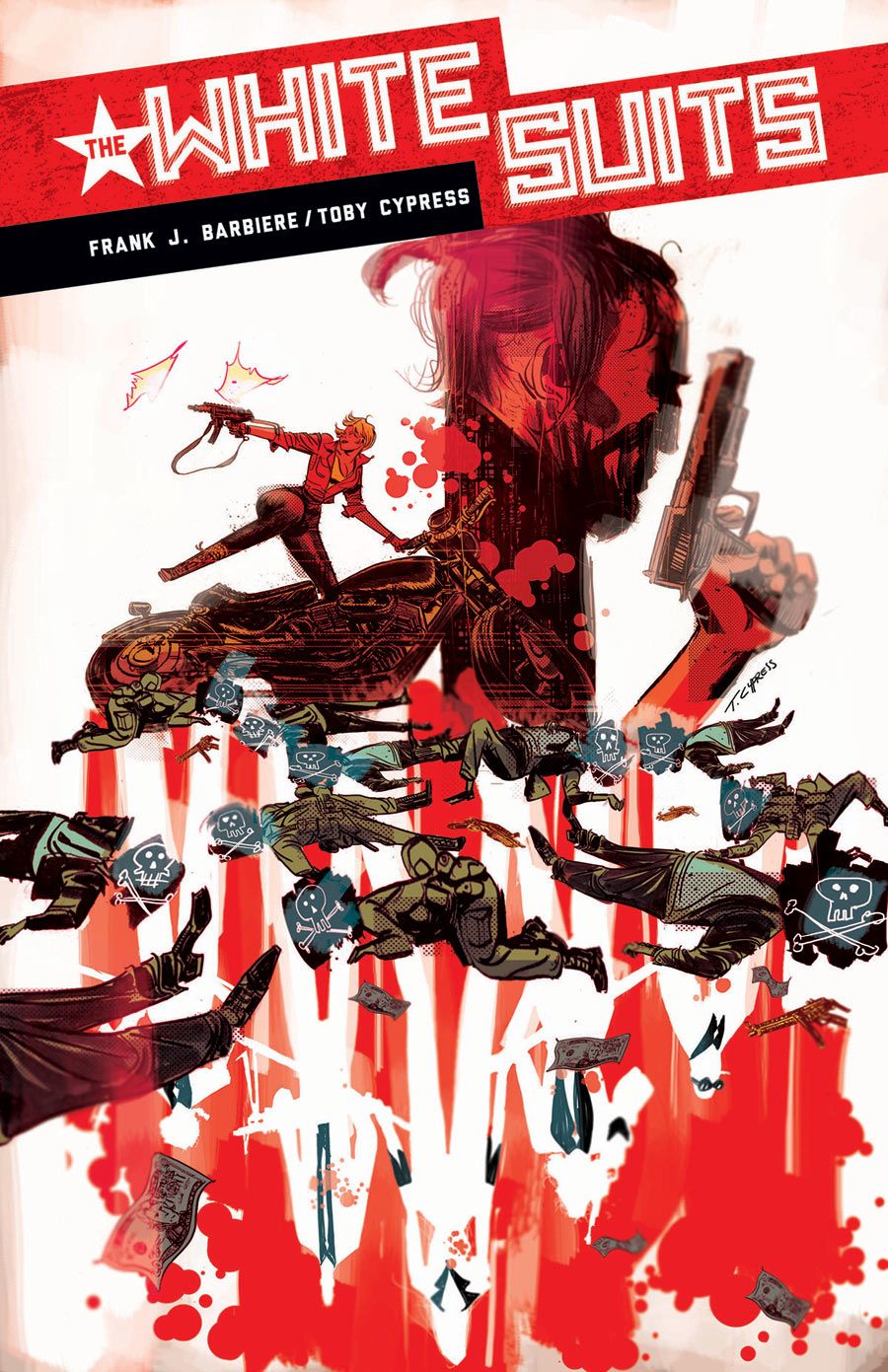Writer Frank Barbiere steps up the violence in "The White Suits" #3, and anyone who's been following this intense mystery knows that's saying a lot. Artist and colorist Toby Cypress amps it up as well, adding a lot more color to the black lines and white suits, particularly red; lots and lots of red. It's a dirtily unique look that gives this comic a look like no other, and it works to great effect as the different elements introduced in past issues start coming together in surprising ways.
Barbiere has set up an enticing mystery, and the trap is sprung in this issue. The well-dressed and enigmatic White Suits themselves are most definitely seen and heard from, but little is actually learned about them. In fact, Barberie cleverly uses their presence at this particular point in the story more as catalysts than protagonists, uniting disparate forces and creating unlikely allies. More surprising still is the way this multi-faceted battle goes down, and the resulting development almost makes one enigma a non-issue while at the same time deepening another.
Cypress' oddly pleasing and distinctive look is a rare case where the coloring takes precedence over the actual line art. The colors are not an embellishment here; they're more like part of an equal partnership, and if anything it's the pencils taking a back seat at times. Whereas Cypress used colors more sparsely in past issues, he takes a much bigger bite out of the rainbow this time and uses his palette with even more purpose. The understated effectiveness from earlier in the story gives way to much more widespread results this issue. Cypress renders flashback sequences in mostly blacks and red tones, and present day in the series' typical white with red splashes, giving a strikingly true night-and-day dichotomy, one that's in keeping with the series and plays well into the tension created by Barbiere's juxtaposition of these sequences. One artistic highlight of every issue has been Cypress' double-page spread that follows the first page, and this issue's is every bit as dynamic as the previous ones.
The exaggerated, abstract style of Cypress' lines gives momentary pause, though. It works for the story, but requires a little more effort on the reader's part to identify character likenesses and to figure out who's shooting whom. It's an ironic kind of distraction, as it gives readers who might try to blow through the story a reason to slow down, and then discover just how cool the art really is upon further inspection.
"The White Suits" #3 isn't for everyone; it's too violent for some and too ugly for many, but those with a little patience will be rewarded for recognizing Barbiere and Cypress' intent.

